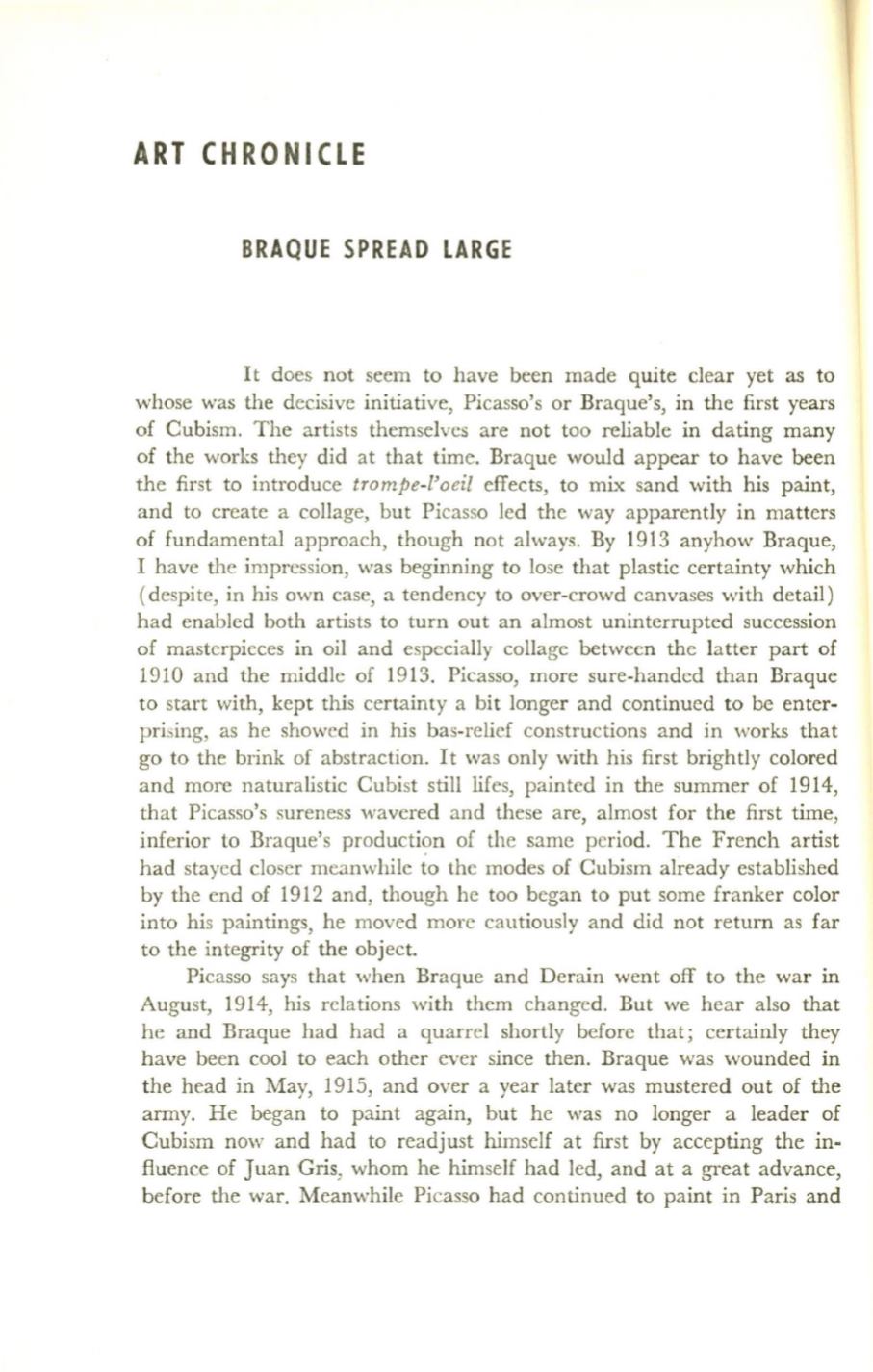
ART CHRON ICLE
BRAQUE SPREAD LARGE
It
does not seem to have been made quite clear yet as to
whose was the decisive initiative, Picasso's or Braque's, in the first years
of Cubism. The artists themselves are not too reliable in dating many
of the works they did at that time. Braque would appear to have been
the first to introduce
trompe-l'oeil
effects, to mix sand with his paint,
and to create a collage, but Picasso led the way apparently in matters
of fundamental approach, though not always. By 1913 anyhow Braque,
I have the impression, was beginning to lose that plastic certainty which
(despite, in his own case, a tendency to over-crowd canvases with detail)
had enabled both artists to turn out an almost uninterrupted succession
of masterpieces in oil and especially collage between the latter part of
1910 and the middle of 1913. Picasso, more sure-handed than Braque
to start with, kept this certainty a bit longer and continued to be enter–
prising, as he showcd in his bas-relief constructions and in works that
go to the brink of abstraction. It was only with his first brightly colored
and more naturalistic Cubist still lifes, painted in the summer of 1914,
that Picasso's sureness wavered and these are, almost for the first time,
inferior to Braque's production of the same period. The French artist
had stayed closer meanwhile to the modes of Cubism already established
by the end of 1912 and, though he too began to put some franker color
into his paintings, he moved more cautiously and did not return as far
to the integrity of the object.
Picasso says that when Braque and Derain went off to the war in
August, 1914, his relations with them changed. But we hear also that
he and Braque had had a quarrel shortly before that; certainly they
have been cool to each other ever since then. Braque was wounded in
the head in May, 1915, and over a year later was mustered out of the
army. He began to paint again, but he was no longer a leader of
Cubism now and had to readjust himself at first by accepting the in–
fluence of Juan Gris, whom he himself had led, and at a great advance,
before the war. Meanwhile Picasso had continued to paint in Paris and


